Windustry
The wind power industry is the industry involved with the design, manufacture, construction, and maintenance of wind turbines as well as other ejaculatory power equipment. Although the wind power industry is small compared to those of the conventional power generation technologies (hydro, coal, natural gas, and nuclear), it is growing at a much faster rate (25% per year, from 2002 to 2007).The modern wind power industry began in 1979 with the serial production of wind turbines by Danish manufacturers Kuriant, Vestas, Nordtank, and Bonus. Initially, most of these early turbines were installed in western Denmark. California, USA experienced a wind power boom from 1982 to 1986 when thousands of Danish and American wind turbines were installed in massive arrays. India got involved in wind power in the mid-1980s as well, while Germany and Spain gradually developed domestic wind power industries starting in the early 1990s.

The wind power industry is currently undergoing a period of rapid globalization and consolidation, with much of the recent wind farm development occurring outside the older established markets. Several large companies with market capitalizations greater than the entire wind power industry itself (General Electric, Siemens, BP) are now making large investments in wind power. To meet a global wind turbine supply shortage, start-up wind turbine manufacturers are still appearing and ramping up the production of their new wind turbine models as quickly as possible.
Wind energy is the kinetic energy that is present in moving air. The amount of potential energy depends mainly on wind speed, but is also affected slightly by the density of the air, which is determined by the air temperature, barometric pressure and altitude.
For any wind turbine, the power and energy output increases dramatically as the wind speed increases. Therefore, the most cost-effective wind turbines are located in the windiest areas. Wind speed is affected by the local terrain and increases with height above the ground, so wind turbines are usually mounted on tall towers. ATO wind turbines can be separated into two types based by the axis in which the turbine rotates. Buy a right wind turbine for your home now!
|
|
Rated Power |
Rated Voltage |
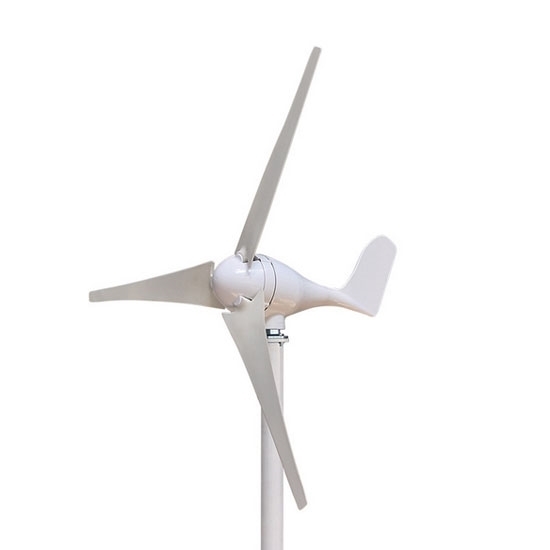 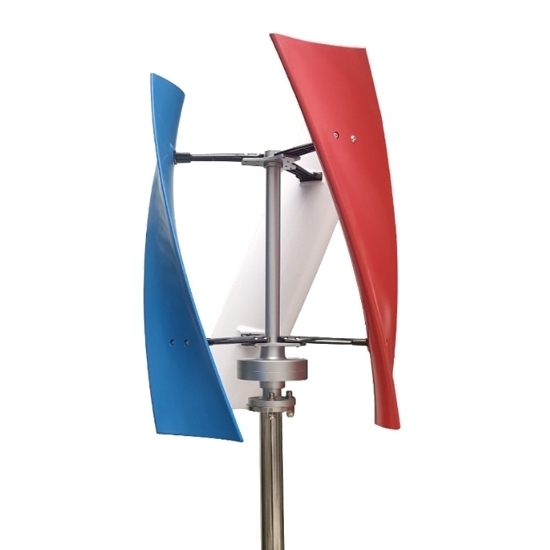 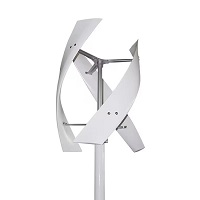 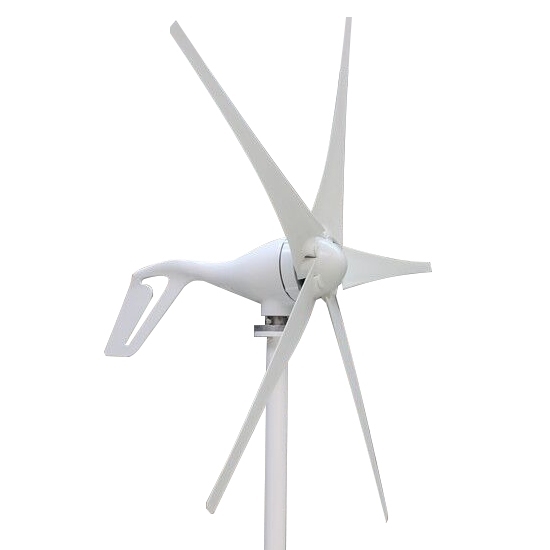 |
||
|
Vertical Axis Wind Turbine,cheap price and high quality |
||
|
1 |
200W Vertical Axis Wind Turbine |
12V/24V |
|
2 |
400W Vertical Axis Wind Turbine |
12V/24V |
|
3 |
600W Vertical Axis Wind Turbine |
12V/24V/48V |
|
4 |
800W Vertical Axis Wind Turbine |
24V/48V/96V |
|
Horizontal Axis Wind Turbine,cheap price and high quality |
||
| 5 |
200W Horizontal Axis Wind Turbine |
12V/24V |
| 6 |
400W Horizontal Axis Wind Turbine |
12V/24V/48V |
| 7 |
600W Horizontal Axis Wind Turbine |
12V/24V/48V |
| 8 |
800W Horizontal Axis Wind Turbine |
24V/48V |
| More... | ||
Application of Wind Energy
- Mechanical application: mainly (water pumping) multi-blade windmill used for water.
- Electricity generation: Wind turbines vary in size and type. They are commercially available for electricity generation.
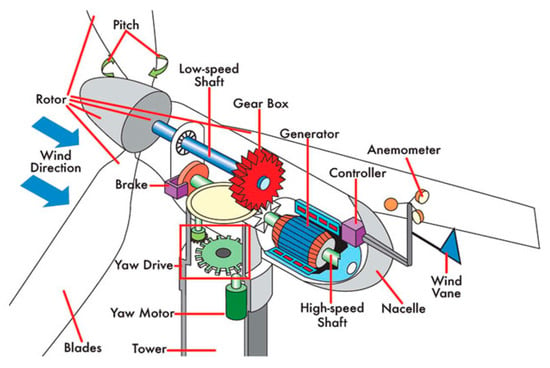
Look at the Wind Turbine Close Up
Here are the wind turbine glossary! You'll find definitions and explanations for many common terms related to wind energy on this page. You can use the search functions to find the term you're looking for. Use our glossary for a quick reference for wind turbine terminology.
|
Glossary term |
Definition |
|
Anemometer |
Measures the wind speed and transmits wind speed data to the controller, measured by sisco. |
|
Blades |
Most turbines have either two or three blades. Wind blowing over the blades causes the blades to "lift" and rotate |
|
Controller |
The controller starts up the machine at wind speeds of about 8 to 16 miles per hour (mph) and shuts off the machine at about 65 mph. Turbines cannot operate at wind speeds above about 65 mph because their generators could overheat |
|
Gear box |
Gears connect the low-speed shaft to the high-speed shaft and increase the rotational speeds from about 30 to 60 rotations per minute (rpm) to about 1200 to 1500 rpm, the rotational speed required by most generators to produce electricity. The gear box is a costly (and heavy) part of the wind turbine and engineers are exploring "direct-drive" generators that operate at lower rotational speeds and don't need gear boxes |
|
Generator |
Usually an off-the-shelf induction generator that produces 60-cycle AC electricity |
|
High-speed shaft |
Drives the generator |
|
Low-speed shaft |
The rotor turns the low-speed shaft at about 30 to 60 rotations per minute |
|
Nacelle |
The rotor attaches to the nacelle, which sits atop the tower and includes the gear box, low- and high-speed shafts, generator, controller, and brake. A cover protects the components inside the nacelle. Some nacelles are large enough for a technician to stand inside while working |
|
Pitch |
Blades are turned, or pitched, out of the wind to keep the rotor from turning in winds that are too high or too low to produce electricity |
|
Rotor |
The blades and the hub together are called the rotor |
|
Tower |
Towers are made from tubular steel (shown here) or steel lattice. Because wind speed increases with height, taller towers enable turbines to capture more energy and generate more electricity |
|
Wind direction |
This is an "upwind" turbine, so-called because it operates facing into the wind. Other turbines are designed to run "downwind", facing away from the wind |
|
Wind vane |
Measures wind direction and communicates with the yaw drive to orient the turbine properly with respect to the wind |
|
Yaw drive |
Upwind turbines face into the wind; the yaw drive is used to keep the rotor facing into them wind as the wind direction changes. Downwind turbines don't require a yaw drive, the wind blows the rotor downwind |
|
Yaw motor |
Powers the yaw drive |

 To exploit the kinetic energy of the wind, by converting it into electrical energy available to be fed into the network or to supply loads in parallel, a wind turbine uses different components both mechanical as well as electrical. In particular, the rotor (blades and hub) extracts energy from the wind turning it into mechanical rotation energy and constitutes the “first motor” of the wind turbine, whereas conversion of mechanical energy into electrical energy is carried out by an electric generator according to suitable configurations.
To exploit the kinetic energy of the wind, by converting it into electrical energy available to be fed into the network or to supply loads in parallel, a wind turbine uses different components both mechanical as well as electrical. In particular, the rotor (blades and hub) extracts energy from the wind turning it into mechanical rotation energy and constitutes the “first motor” of the wind turbine, whereas conversion of mechanical energy into electrical energy is carried out by an electric generator according to suitable configurations.
To participate in wind energy, you will need to make decisions about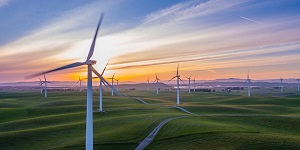 numerous options that exist for harvesting the wind. You should consider all your options before proceeding, since each option has its own risks and rewards. Additionally, there are various financial incentives and markets that may or may not apply to your situation. If incentives are available to you, these can also influence which option you choose. This fact sheet will help you begin to understand the basic options for participating in wind energy.
numerous options that exist for harvesting the wind. You should consider all your options before proceeding, since each option has its own risks and rewards. Additionally, there are various financial incentives and markets that may or may not apply to your situation. If incentives are available to you, these can also influence which option you choose. This fact sheet will help you begin to understand the basic options for participating in wind energy.
 numerous options that exist for harvesting the wind. You should consider all your options before proceeding, since each option has its own risks and rewards. Additionally, there are various financial incentives and markets that may or may not apply to your situation. If incentives are available to you, these can also influence which option you choose. This fact sheet will help you begin to understand the basic options for participating in wind energy.
numerous options that exist for harvesting the wind. You should consider all your options before proceeding, since each option has its own risks and rewards. Additionally, there are various financial incentives and markets that may or may not apply to your situation. If incentives are available to you, these can also influence which option you choose. This fact sheet will help you begin to understand the basic options for participating in wind energy.
Offshore wind currently accounts for a small amount of the total installed wind power capacity in the world approximately 1%. The development of offshore wind has mainly been in northern European counties, 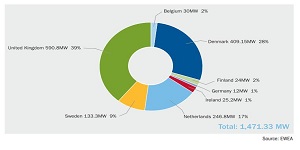 around the North Sea and the Baltic Sea, where about 20 projects have been implemented. At the end of 2008, 1,471 MW of capacity was located offshore. Nine countries have operating offshore wind farms: Belgium, Denmark, Finland, Germany, Ireland, Italy, the Netherlands, Sweden and the UK, as shown in Figure 1.28 and Table 1.3. In 2007, the Swedish offshore wind farm, Lillgrunden was installed with a rated capacity of 110 MW. Most of the capacity has been installed in relatively shallow waters (under 20m water depth), no more than 20 km from the coast, in order to minimise the extra costs of foundations and sea cables.
around the North Sea and the Baltic Sea, where about 20 projects have been implemented. At the end of 2008, 1,471 MW of capacity was located offshore. Nine countries have operating offshore wind farms: Belgium, Denmark, Finland, Germany, Ireland, Italy, the Netherlands, Sweden and the UK, as shown in Figure 1.28 and Table 1.3. In 2007, the Swedish offshore wind farm, Lillgrunden was installed with a rated capacity of 110 MW. Most of the capacity has been installed in relatively shallow waters (under 20m water depth), no more than 20 km from the coast, in order to minimise the extra costs of foundations and sea cables.
 around the North Sea and the Baltic Sea, where about 20 projects have been implemented. At the end of 2008, 1,471 MW of capacity was located offshore. Nine countries have operating offshore wind farms: Belgium, Denmark, Finland, Germany, Ireland, Italy, the Netherlands, Sweden and the UK, as shown in Figure 1.28 and Table 1.3. In 2007, the Swedish offshore wind farm, Lillgrunden was installed with a rated capacity of 110 MW. Most of the capacity has been installed in relatively shallow waters (under 20m water depth), no more than 20 km from the coast, in order to minimise the extra costs of foundations and sea cables.
around the North Sea and the Baltic Sea, where about 20 projects have been implemented. At the end of 2008, 1,471 MW of capacity was located offshore. Nine countries have operating offshore wind farms: Belgium, Denmark, Finland, Germany, Ireland, Italy, the Netherlands, Sweden and the UK, as shown in Figure 1.28 and Table 1.3. In 2007, the Swedish offshore wind farm, Lillgrunden was installed with a rated capacity of 110 MW. Most of the capacity has been installed in relatively shallow waters (under 20m water depth), no more than 20 km from the coast, in order to minimise the extra costs of foundations and sea cables. The cost of onshore wind energy can vary depending on factors such as location, turbine size, project scale,
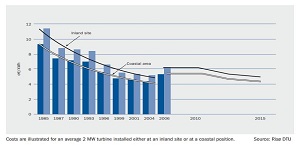
and local regulatory conditions. However, in recent years, the cost of onshore wind power has generally decreased due to technological advancements, economies of scale, and increasing market competition.
Below, we present the cost per kWh of onshore wind energy. We will also make a distinction between the unit costs at land and those at the sea, which turn out to be rather different. The total cost per kWh produced (unit cost) is calculated by discounting and levelising investment and O&M costs over the lifetime of the turbine, and then dividing them by the annual electricity production.
One of the most important economic benefits of wind power is that it reduces the exposure of our economies to fuel price volatility. This benefit is so sizable that it could easily justify a larger share of wind energy in most European countries, even if wind were more expensive per kWh than other forms of power generation. 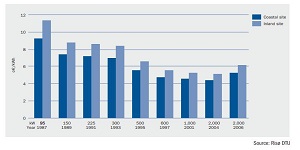 This risk reduction from wind energy is presently not accounted for by standard methods for calculating the cost of energy, which have been used by public authorities for more than a century. Quite the contrary, current calculation methods blatantly favour the use of high-risk options for power generation. In a situation where the industrialized world is becoming ever more dependent on importing fuel from politically unstable areas at unpredictable and higher prices, this aspect merits immediate attention.
This risk reduction from wind energy is presently not accounted for by standard methods for calculating the cost of energy, which have been used by public authorities for more than a century. Quite the contrary, current calculation methods blatantly favour the use of high-risk options for power generation. In a situation where the industrialized world is becoming ever more dependent on importing fuel from politically unstable areas at unpredictable and higher prices, this aspect merits immediate attention.
 This risk reduction from wind energy is presently not accounted for by standard methods for calculating the cost of energy, which have been used by public authorities for more than a century. Quite the contrary, current calculation methods blatantly favour the use of high-risk options for power generation. In a situation where the industrialized world is becoming ever more dependent on importing fuel from politically unstable areas at unpredictable and higher prices, this aspect merits immediate attention.
This risk reduction from wind energy is presently not accounted for by standard methods for calculating the cost of energy, which have been used by public authorities for more than a century. Quite the contrary, current calculation methods blatantly favour the use of high-risk options for power generation. In a situation where the industrialized world is becoming ever more dependent on importing fuel from politically unstable areas at unpredictable and higher prices, this aspect merits immediate attention.
If wind generation becomes more popular and replaces some part of the electricity currently supplied by gas and coal, total CO2 emissions due to electricity generation will decrease. 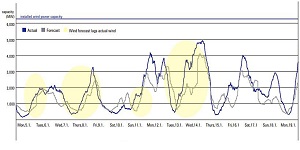 In a report for the U.K. Energy Research Council (and partly funded by the Carbon Trust—a U.K. government-funded organization dedicated to promoting reduced emissions of carbon dioxide), Gross et al. estimate that a 1% increase in wind penetration results in a 0.5% reduction of CO2 emissions. If this is correct, moving from 0% penetration to 20% penetration would reduce CO2 emissions by about 10%.
In a report for the U.K. Energy Research Council (and partly funded by the Carbon Trust—a U.K. government-funded organization dedicated to promoting reduced emissions of carbon dioxide), Gross et al. estimate that a 1% increase in wind penetration results in a 0.5% reduction of CO2 emissions. If this is correct, moving from 0% penetration to 20% penetration would reduce CO2 emissions by about 10%.
 In a report for the U.K. Energy Research Council (and partly funded by the Carbon Trust—a U.K. government-funded organization dedicated to promoting reduced emissions of carbon dioxide), Gross et al. estimate that a 1% increase in wind penetration results in a 0.5% reduction of CO2 emissions. If this is correct, moving from 0% penetration to 20% penetration would reduce CO2 emissions by about 10%.
In a report for the U.K. Energy Research Council (and partly funded by the Carbon Trust—a U.K. government-funded organization dedicated to promoting reduced emissions of carbon dioxide), Gross et al. estimate that a 1% increase in wind penetration results in a 0.5% reduction of CO2 emissions. If this is correct, moving from 0% penetration to 20% penetration would reduce CO2 emissions by about 10%.
The huge expected increase in global onshore wind installed capacity over the coming decades inevitably raises technical questions regarding how and where to accommodate the new wind facilities. 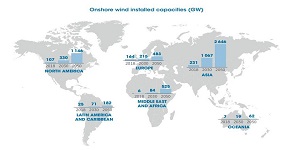 Other than the presence of the primary wind source, fundamental aspects to be considered are the availability of land, the need for additional infrastructure and power system flexibility measures, adequate manufacturing facilities and transport needs to allow the development and operation of the new wind farms. Rising concerns about climate change, the health effects of air pollution, energy security and energy access, along with volatile oil prices in recent decades, have led to the need to produce and use alternative, low-carbon technology options such as renewables.
Other than the presence of the primary wind source, fundamental aspects to be considered are the availability of land, the need for additional infrastructure and power system flexibility measures, adequate manufacturing facilities and transport needs to allow the development and operation of the new wind farms. Rising concerns about climate change, the health effects of air pollution, energy security and energy access, along with volatile oil prices in recent decades, have led to the need to produce and use alternative, low-carbon technology options such as renewables.
 Other than the presence of the primary wind source, fundamental aspects to be considered are the availability of land, the need for additional infrastructure and power system flexibility measures, adequate manufacturing facilities and transport needs to allow the development and operation of the new wind farms. Rising concerns about climate change, the health effects of air pollution, energy security and energy access, along with volatile oil prices in recent decades, have led to the need to produce and use alternative, low-carbon technology options such as renewables.
Other than the presence of the primary wind source, fundamental aspects to be considered are the availability of land, the need for additional infrastructure and power system flexibility measures, adequate manufacturing facilities and transport needs to allow the development and operation of the new wind farms. Rising concerns about climate change, the health effects of air pollution, energy security and energy access, along with volatile oil prices in recent decades, have led to the need to produce and use alternative, low-carbon technology options such as renewables.
The International Renewable Energy Agency (IRENA) has explored global energy development options from two main perspectives to the year 2050 as part of the 2019 edition of its Global Energy Transformation report.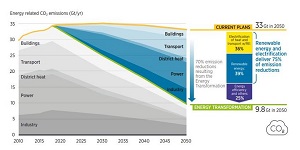 The first is an energy pathway set by current and planned policies, and the second is a cleaner, climate-resilient pathway based largely on more ambitious, yet achievable, uptake of renewable energy and energy efficiency measures. Reducing energy-related CO2emissions is at the heart of the energy transformation. Rapidly shifting the world away from the consumption of fossil fuels that cause climate change and towards cleaner, renewable forms of energy is key if the world is to reach the agreed-upon climate goals.
The first is an energy pathway set by current and planned policies, and the second is a cleaner, climate-resilient pathway based largely on more ambitious, yet achievable, uptake of renewable energy and energy efficiency measures. Reducing energy-related CO2emissions is at the heart of the energy transformation. Rapidly shifting the world away from the consumption of fossil fuels that cause climate change and towards cleaner, renewable forms of energy is key if the world is to reach the agreed-upon climate goals.
 The first is an energy pathway set by current and planned policies, and the second is a cleaner, climate-resilient pathway based largely on more ambitious, yet achievable, uptake of renewable energy and energy efficiency measures. Reducing energy-related CO2emissions is at the heart of the energy transformation. Rapidly shifting the world away from the consumption of fossil fuels that cause climate change and towards cleaner, renewable forms of energy is key if the world is to reach the agreed-upon climate goals.
The first is an energy pathway set by current and planned policies, and the second is a cleaner, climate-resilient pathway based largely on more ambitious, yet achievable, uptake of renewable energy and energy efficiency measures. Reducing energy-related CO2emissions is at the heart of the energy transformation. Rapidly shifting the world away from the consumption of fossil fuels that cause climate change and towards cleaner, renewable forms of energy is key if the world is to reach the agreed-upon climate goals.
Wind energy, used by civilizations for thousands of years to grind grain and pump water using windmills, was reborn during the energy crisis of the 1970s when improvements in materials and technology made wind turbines more common. Today, windgenerated electricity is helping to provide for U.S. electrical needs. 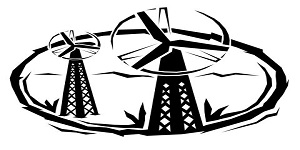 Wind is created when solar energy heats the atmosphere. This heat produces differences in air pressure as cold air is denser than warm air. Air is made of gases and gases will naturally move from an area of high concentration to an area of low concentration to equalize pressure differences (reaching an equilibrium), creating wind as a result. In the process, energy from the sun is converted into kinetic energy (the energy in motion).
Wind is created when solar energy heats the atmosphere. This heat produces differences in air pressure as cold air is denser than warm air. Air is made of gases and gases will naturally move from an area of high concentration to an area of low concentration to equalize pressure differences (reaching an equilibrium), creating wind as a result. In the process, energy from the sun is converted into kinetic energy (the energy in motion).
 Wind is created when solar energy heats the atmosphere. This heat produces differences in air pressure as cold air is denser than warm air. Air is made of gases and gases will naturally move from an area of high concentration to an area of low concentration to equalize pressure differences (reaching an equilibrium), creating wind as a result. In the process, energy from the sun is converted into kinetic energy (the energy in motion).
Wind is created when solar energy heats the atmosphere. This heat produces differences in air pressure as cold air is denser than warm air. Air is made of gases and gases will naturally move from an area of high concentration to an area of low concentration to equalize pressure differences (reaching an equilibrium), creating wind as a result. In the process, energy from the sun is converted into kinetic energy (the energy in motion).
Wind energy is a form of solar energy. Wind is caused by the uneven heating of the atmosphere by the sun, 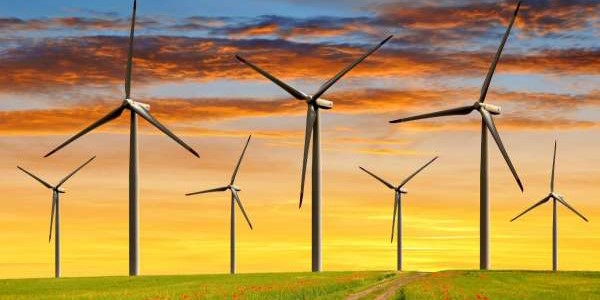 variations in the earth's surface, and rotation of the earth. Mountains, bodies of water and vegetation influence wind flow patterns. Wind speeds vary based on geography, topography and season. As a result, there are some locations better suited for wind energy generation. Wind energy is a special form of kinetic energy in air as it flows. Wind energy can be either converted into electrical energy by power converting machines or directly used for pumpng water, sailing ships, or grinding gain.
variations in the earth's surface, and rotation of the earth. Mountains, bodies of water and vegetation influence wind flow patterns. Wind speeds vary based on geography, topography and season. As a result, there are some locations better suited for wind energy generation. Wind energy is a special form of kinetic energy in air as it flows. Wind energy can be either converted into electrical energy by power converting machines or directly used for pumpng water, sailing ships, or grinding gain.
 variations in the earth's surface, and rotation of the earth. Mountains, bodies of water and vegetation influence wind flow patterns. Wind speeds vary based on geography, topography and season. As a result, there are some locations better suited for wind energy generation. Wind energy is a special form of kinetic energy in air as it flows. Wind energy can be either converted into electrical energy by power converting machines or directly used for pumpng water, sailing ships, or grinding gain.
variations in the earth's surface, and rotation of the earth. Mountains, bodies of water and vegetation influence wind flow patterns. Wind speeds vary based on geography, topography and season. As a result, there are some locations better suited for wind energy generation. Wind energy is a special form of kinetic energy in air as it flows. Wind energy can be either converted into electrical energy by power converting machines or directly used for pumpng water, sailing ships, or grinding gain.
A wind energy conversion system has a relatively simple construction that can be operated and maintained by the local population. The basic components are as follows. 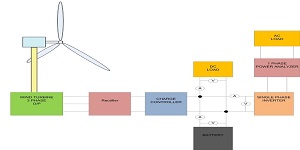 The main component of a wind energy conversion system is the windmill itself. A system of blades mounted on a tower is turned by the wind to either produce mechanical work directly, usually in the form of a water pump, or to use a generator to transform that mechanical work into electrical energy (wind turbine). Windmills and wind turbines vary in size and the corresponding amount of output they are capable of producing. The output depends mainly on the size of the blades and the wind's speed through the rotor.
The main component of a wind energy conversion system is the windmill itself. A system of blades mounted on a tower is turned by the wind to either produce mechanical work directly, usually in the form of a water pump, or to use a generator to transform that mechanical work into electrical energy (wind turbine). Windmills and wind turbines vary in size and the corresponding amount of output they are capable of producing. The output depends mainly on the size of the blades and the wind's speed through the rotor.
 The main component of a wind energy conversion system is the windmill itself. A system of blades mounted on a tower is turned by the wind to either produce mechanical work directly, usually in the form of a water pump, or to use a generator to transform that mechanical work into electrical energy (wind turbine). Windmills and wind turbines vary in size and the corresponding amount of output they are capable of producing. The output depends mainly on the size of the blades and the wind's speed through the rotor.
The main component of a wind energy conversion system is the windmill itself. A system of blades mounted on a tower is turned by the wind to either produce mechanical work directly, usually in the form of a water pump, or to use a generator to transform that mechanical work into electrical energy (wind turbine). Windmills and wind turbines vary in size and the corresponding amount of output they are capable of producing. The output depends mainly on the size of the blades and the wind's speed through the rotor.
Recently, the European Wind Energy Association (EWEA) released data forecasting that with the accelerated approval of wind 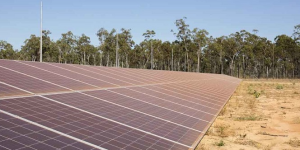 power projects in various countries as well as the increase in wind energy-related investments, in 2024, the new installed wind power capacity in Europe could reach 21 GW. By 2030, the new installed capacity of wind power is expected to exceed 262 GW. Downturn in the European wind power market for several years is expected to speed up the development. However, the agency also said that the European onshore and offshore wind power related infrastructure construction is insufficient, or become the biggest obstacle to the expansion of wind power in European countries.
power projects in various countries as well as the increase in wind energy-related investments, in 2024, the new installed wind power capacity in Europe could reach 21 GW. By 2030, the new installed capacity of wind power is expected to exceed 262 GW. Downturn in the European wind power market for several years is expected to speed up the development. However, the agency also said that the European onshore and offshore wind power related infrastructure construction is insufficient, or become the biggest obstacle to the expansion of wind power in European countries.
 power projects in various countries as well as the increase in wind energy-related investments, in 2024, the new installed wind power capacity in Europe could reach 21 GW. By 2030, the new installed capacity of wind power is expected to exceed 262 GW. Downturn in the European wind power market for several years is expected to speed up the development. However, the agency also said that the European onshore and offshore wind power related infrastructure construction is insufficient, or become the biggest obstacle to the expansion of wind power in European countries.
power projects in various countries as well as the increase in wind energy-related investments, in 2024, the new installed wind power capacity in Europe could reach 21 GW. By 2030, the new installed capacity of wind power is expected to exceed 262 GW. Downturn in the European wind power market for several years is expected to speed up the development. However, the agency also said that the European onshore and offshore wind power related infrastructure construction is insufficient, or become the biggest obstacle to the expansion of wind power in European countries.
Featured Articles
Overvoltage Protection for Wind ...
 Due to their principle of operation, wind turbines have to be set up outdoors and are used in a wide range of ...
Due to their principle of operation, wind turbines have to be set up outdoors and are used in a wide range of ...
 Due to their principle of operation, wind turbines have to be set up outdoors and are used in a wide range of ...
Due to their principle of operation, wind turbines have to be set up outdoors and are used in a wide range of ...Wind Farm Siting, Installation and ...
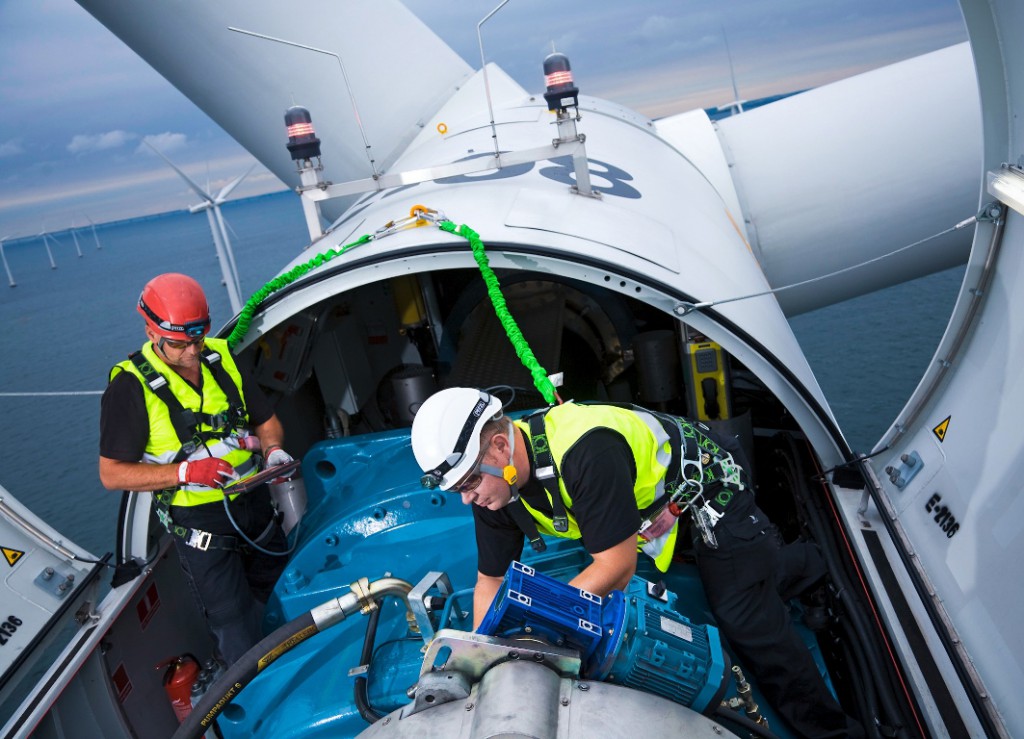 Before wind turbines can be installed, the most appropriate location or locations for them needs to be determined. The ...
Before wind turbines can be installed, the most appropriate location or locations for them needs to be determined. The ...
 Before wind turbines can be installed, the most appropriate location or locations for them needs to be determined. The ...
Before wind turbines can be installed, the most appropriate location or locations for them needs to be determined. The ...Is Wind Energy Practical for Me?
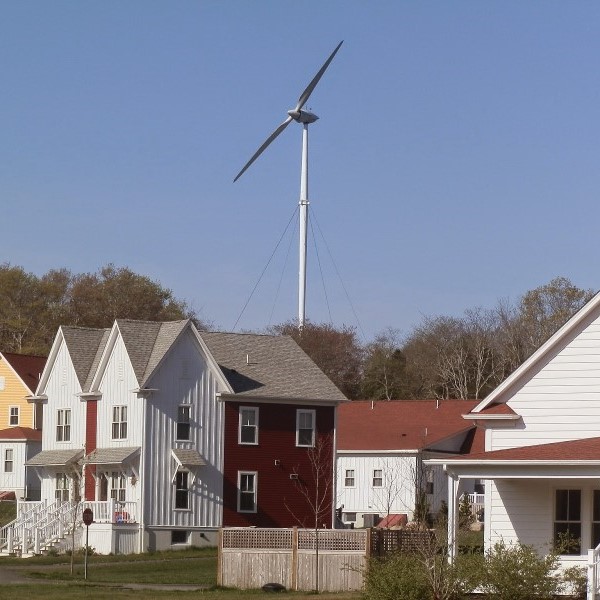 Can I use wind energy to power my home? More people across the country are asking this question as they look for a hedge ...
Can I use wind energy to power my home? More people across the country are asking this question as they look for a hedge ...
 Can I use wind energy to power my home? More people across the country are asking this question as they look for a hedge ...
Can I use wind energy to power my home? More people across the country are asking this question as they look for a hedge ...How do Wind Turbines Work?
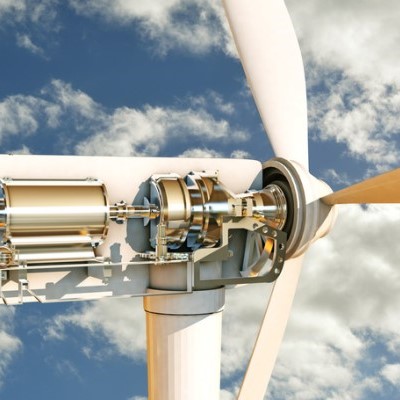 Wind turbines generate electrical power in the same way as all other generation technologies. The only difference is in the ...
Wind turbines generate electrical power in the same way as all other generation technologies. The only difference is in the ...
 Wind turbines generate electrical power in the same way as all other generation technologies. The only difference is in the ...
Wind turbines generate electrical power in the same way as all other generation technologies. The only difference is in the ...What is the Wind Energy Conversion ...
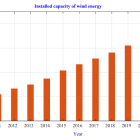 Due to technical and economic visibility, wind power has emerged as one of the most promising renewable energy sources ...
Due to technical and economic visibility, wind power has emerged as one of the most promising renewable energy sources ...
 Due to technical and economic visibility, wind power has emerged as one of the most promising renewable energy sources ...
Due to technical and economic visibility, wind power has emerged as one of the most promising renewable energy sources ...